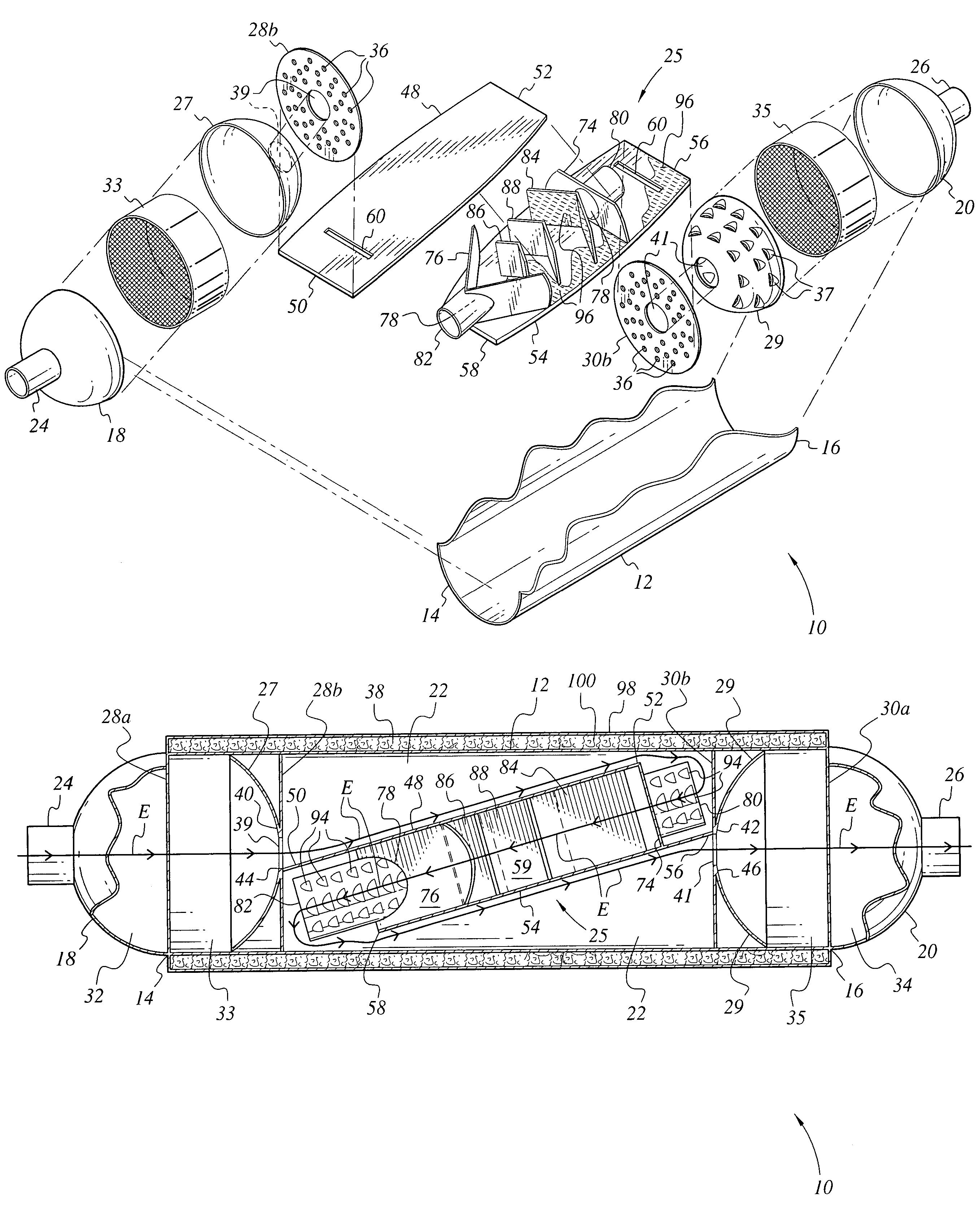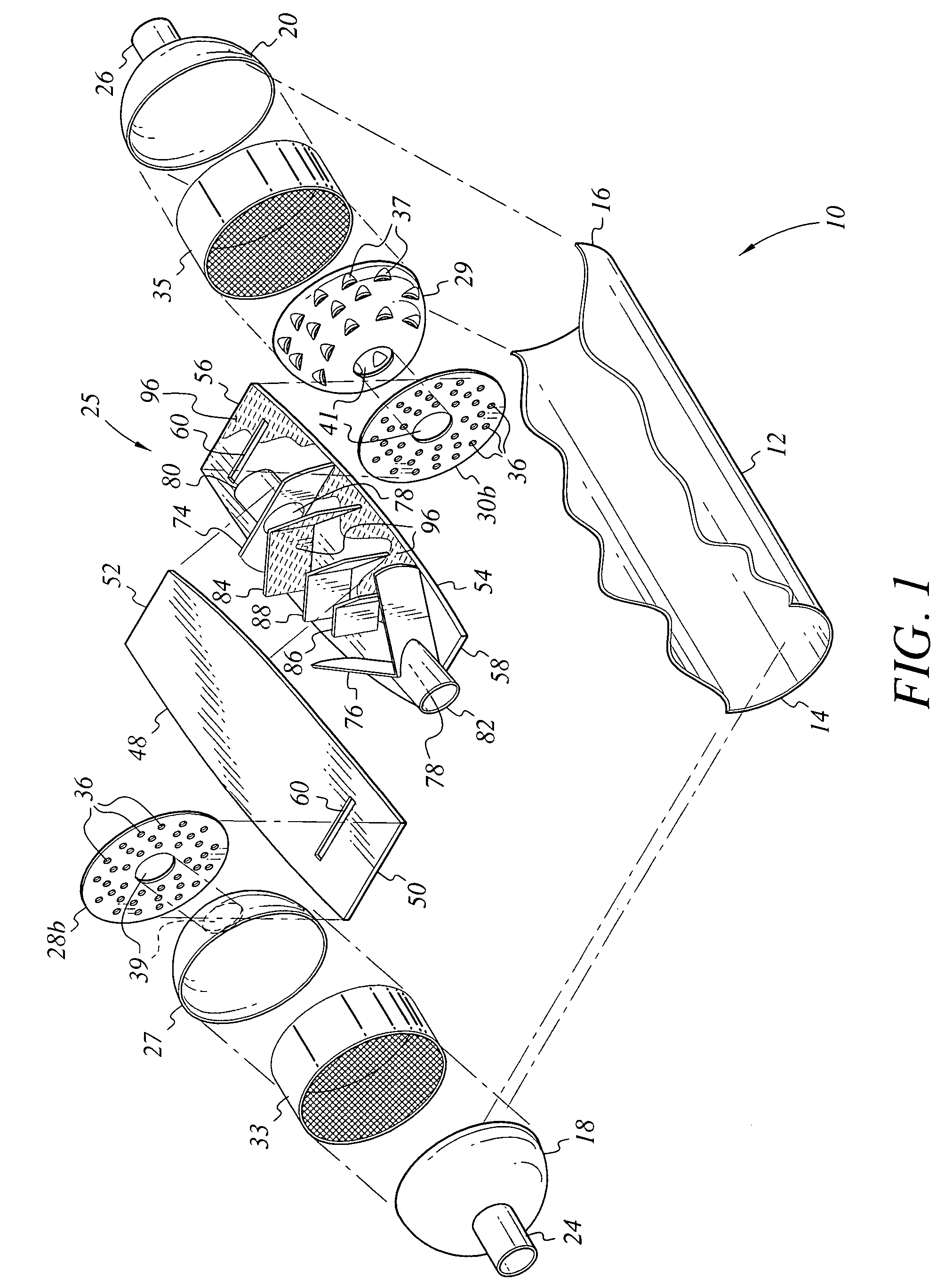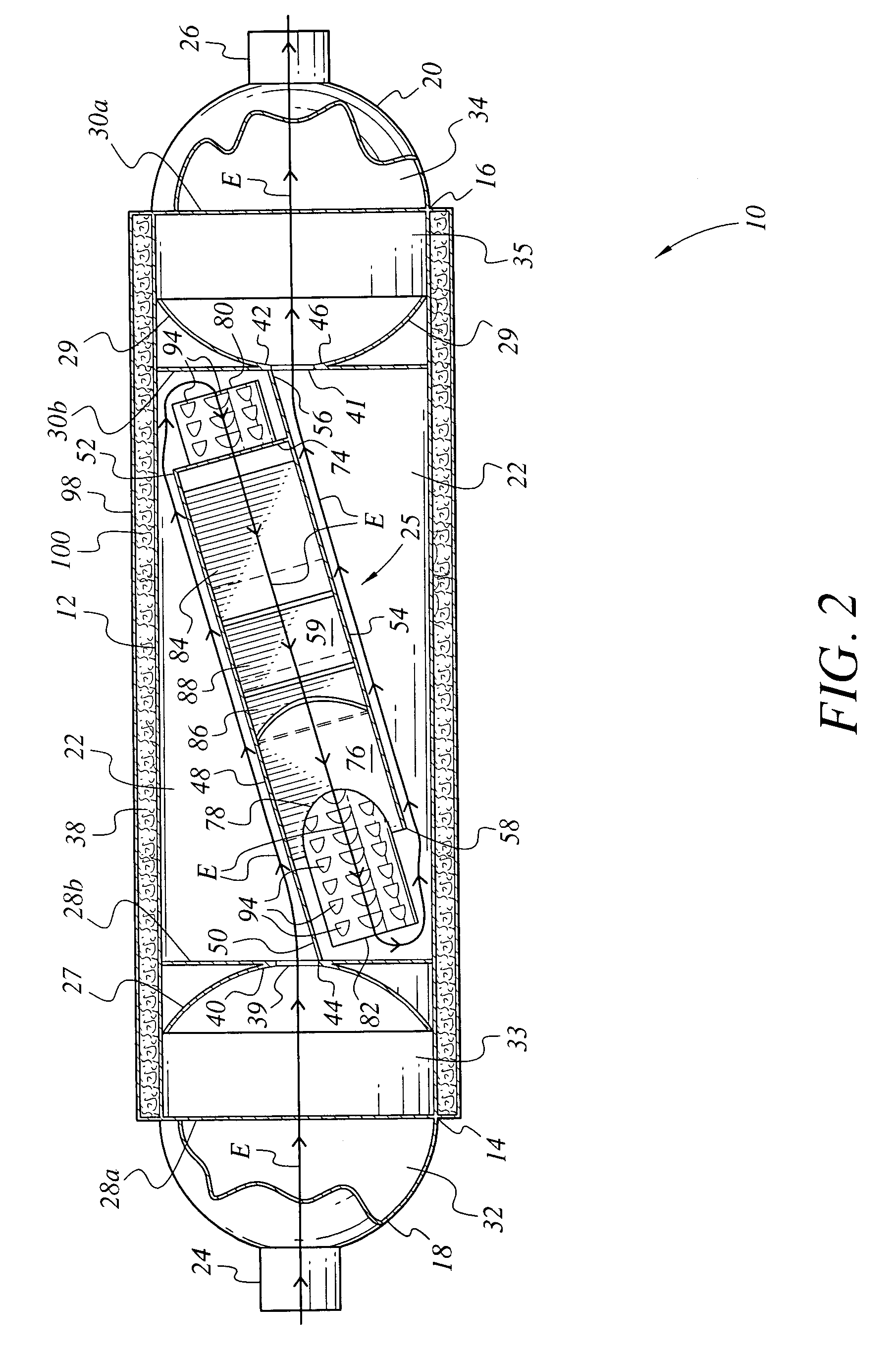Exhaust sound and emission control systems
a technology for exhaust sound and emission control, applied in the direction of engines, machines/engines, mechanical apparatus, etc., can solve the problems of adversely affecting the environment, not being combined into a single unit, and ever-increasing volume of automobile and truck traffic generating exhaust emissions, so as to enhance the effect of emission reduction and reduce the exhaust components
- Summary
- Abstract
- Description
- Claims
- Application Information
AI Technical Summary
Benefits of technology
Problems solved by technology
Method used
Image
Examples
Embodiment Construction
[0083]The present invention comprises various embodiments of an exhaust system for attenuating the sound, and optionally treating the emissions, of an internal combustion engine. The present exhaust system is more than just a muffler, and combines aspects of a muffler with aspects of a resonator unit as well. Optionally, the present system may incorporate catalytic materials for emissions treatment of the exhaust gases flowing therethrough, as noted above. Thus, the present exhaust treatment system provides a more compact, lighter weight, and more economical device for treating and controlling sound and other emissions of the exhaust of an internal combustion engine, replacing the multiple units required by conventional exhaust systems.
[0084]FIGS. 1 and 2 of the drawings provide exploded perspective and sectional views of a first embodiment 10 of the present exhaust system, comprising a generally cylindrical unit. The internal components of the exhaust system 10 are enclosed in an e...
PUM
 Login to View More
Login to View More Abstract
Description
Claims
Application Information
 Login to View More
Login to View More - R&D
- Intellectual Property
- Life Sciences
- Materials
- Tech Scout
- Unparalleled Data Quality
- Higher Quality Content
- 60% Fewer Hallucinations
Browse by: Latest US Patents, China's latest patents, Technical Efficacy Thesaurus, Application Domain, Technology Topic, Popular Technical Reports.
© 2025 PatSnap. All rights reserved.Legal|Privacy policy|Modern Slavery Act Transparency Statement|Sitemap|About US| Contact US: help@patsnap.com



